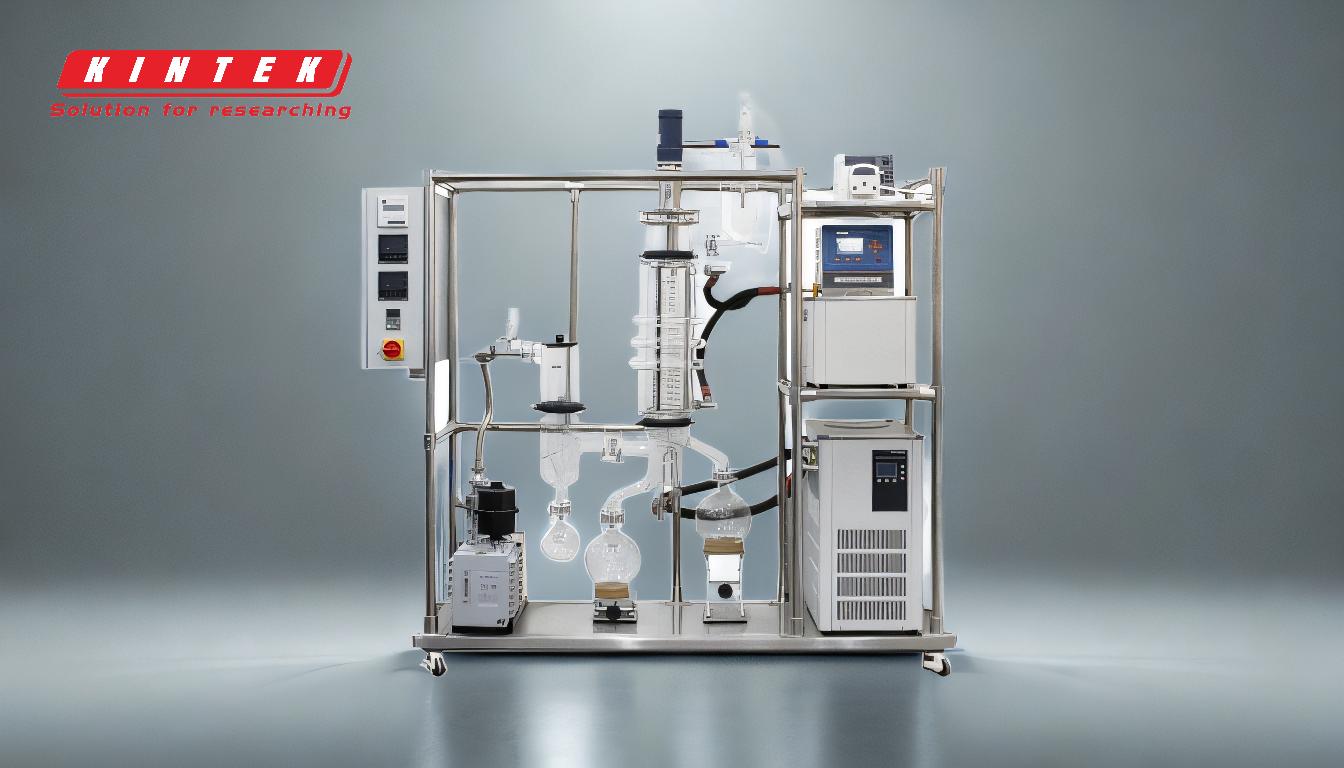Molecular distillation is a specialized vacuum distillation process used for separating and purifying thermally sensitive materials. It operates under extremely low pressure (≈ 0.01 torr) and utilizes the differences in the mean free path of molecules to achieve separation without boiling. The process involves five key steps: forming a liquid film on a heated surface, free evaporation of molecules, movement of molecules to a condensing surface, condensation of molecules, and collection of distillates and residues. This method is highly efficient for processing complex molecules and natural products, ensuring minimal thermal degradation and energy consumption.
Key Points Explained:

-
Formation of a Liquid Film on the Heating Surface:
- The feed material is introduced into the distillation vessel and flows down the heated walls.
- PTFE wipers spread the liquid into a thin film, ensuring uniform heating and efficient evaporation.
- The thin film formation is crucial as it maximizes the surface area for evaporation and minimizes the thermal exposure time of the material.
-
Free Evaporation of Component Molecules:
- The liquid film is heated, causing the lighter molecules to evaporate from the surface.
- This evaporation occurs under high vacuum conditions, significantly reducing the boiling points of the components.
- The process avoids boiling, which is essential for preventing thermal degradation of sensitive materials.
-
Movement of Component Molecules to the Condensing Surface:
- The evaporated molecules travel a short distance to the condensing surface due to the high vacuum and close proximity of the surfaces.
- Light molecules with longer mean free paths reach the condenser, while heavier molecules with shorter mean free paths return to the liquid phase.
- This step leverages the differences in molecular mean free paths to achieve separation.
-
Condensation of Component Molecules:
- The evaporated molecules condense on the cooler condensing surface, forming a liquid film.
- The condensed liquid is collected as the distillate, which is the purified product.
- The condensation process is rapid, ensuring minimal heat exposure and preserving the integrity of the distilled components.
-
Collection of Distillates and Residues:
- The distillate is collected from the condensing surface, while the residue (un-evaporated material) is collected at the bottom of the vessel.
- The residue can be recirculated through the feed line for further distillation, ensuring maximum yield and purity.
- This step completes the separation process, yielding high-purity products suitable for various applications.
Molecular distillation is particularly advantageous for processing thermally sensitive and high molecular weight compounds, such as cannabinoids, essential oils, and vitamins. The process's efficiency, minimal thermal degradation, and energy consumption make it a preferred method in industries requiring high-purity separation and purification.
Summary Table:
| Step | Process | Key Details |
|---|---|---|
| 1 | Formation of a Liquid Film | Feed material forms a thin film on heated walls using PTFE wipers for uniform heating. |
| 2 | Free Evaporation | Light molecules evaporate under high vacuum, avoiding boiling to prevent degradation. |
| 3 | Movement to Condensing Surface | Molecules travel short distances; lighter ones condense, heavier ones return to liquid. |
| 4 | Condensation | Evaporated molecules condense on a cooler surface, forming purified distillate. |
| 5 | Collection | Distillate is collected, and residue is recirculated for maximum yield and purity. |
Discover how molecular distillation can enhance your high-purity separation process—contact us today!









